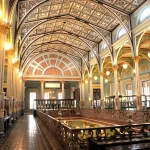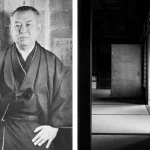DAG has recently acquired painter Jamini Roy’s residence with the aim of creating India’s first, world-class, private, single-artist museum and cultural resource centre on the life, work and times of the pioneering artist.
Jamini Roy, an Indian painter and a Padma Bhushan awardee (1954) was born on 11 April 1887 into a moderately prosperous Kayastha family of land-owners in Beliatore village of the Bankura district, West Bengal. He remains one of the most famous pupils of Abanindranath Tagore, another praised Indian artist and instructor. Roy’s highly simplified, flattened-out style that was reminiscent of European modern art was influenced by the “bazaar” paintings sold at Indian temples as talismans.
Jamini Roy was raised in an average middle-class, art-loving household and at sixteen he was sent to study at the Government College of Art, Kolkata. Abanindranath Tagore, the founder of Bengal School was vice-principal at the institution. He was taught to paint in the prevailing academic tradition drawing Classical nudes and painting in oils and in 1908 he received his Diploma in Fine Art.
Roy is known for his distinctive style, inspired by the art and craft traditions of folk artists and sculptors, in particular the simplicity and aesthetics of Santhal life. He was awarded the Viceroy’s Gold Medal in 1935, the Padma Bhushan in 1955, and elected a Fellow of the Lalit Kala Akademi in 1956. Declared a National Treasure artist in 1976, his works cannot be exported.
He began his career painting landscapes and portraits but soon started experimenting with a more indigenous visual vocabulary. Level surfaces, flattening of design in-depth, and the use of dissonant primary colours were aspects of folk painting that Roy incorporated in his work. Also, he took up the volumetric forms of the Kalighat patachitras.
Jamini Roy built a house in a quiet, by-lane of Kolkata’s Ballygunge neighbourhood without the services of any designer and purely on ‘nijer matha’ in other words from the ‘ideas of my own mind’. Representative of homes that were built in the city in the 1940s and 1950s, the house would perhaps be quite unremarkable, had it not been for the fact that it had been the home and studio of one of India’s most prolific and popular modernist painters, Jamini Roy. He built this house in several phases and lived there with his family till his passing away in 1972.
This March, his home was acquired by DAG with the aim of creating India’s first, world-class, private, single-artist museum and cultural resource centre on the life, work and times of the pioneering artist. The Jamini Roy House Museum is due to open next year.
The interiors will be restored carefully and will bring the artist’s workspaces and his homespun ethos to life, the museum—with a built-up area of 7,284.17 sq ft across three floors, a courtyard with an outhouse of 902.66 sq ft and terrace spaces of 1,616 sq ft—will be equipped with state-of-the-art galleries to house the permanent collection, as well as rotating exhibitions, community spaces like a resource centre and a library, art workshops and event spaces, as well as a museum shop and cafe to complete the visitor experience. Plans are also being drawn up for academic and cultural programmes.
The three-storeyed structure, with a courtyard and balconies and terraces at multiple levels, housed Roy’s studio on the ground floor, which he had designed for this sole purpose. This was where he worked, prolifically, met guests and clients, and kept his work. Depending on the time of the year, or the day, he would move into the courtyard—in the shade of a towering mango tree—with his canvases and paints.
Unlike the ground floor, the first and second floors of the house have rooms, kitchens, bathrooms and balconies that were meant for the family to live in. On a wall is written, as though in a large textbook, the English alphabet in bright magenta, while crayon drawings and squiggles spread across other walls. Clearly, a child’s delight. Rooms and corridors open into each other through multiple doors, while skylights provide added light and ventilation. All design elements were meticulously thought out by Roy, such as signature motifs being repeated across the window and skylight grilles across the house. The museum is now a work in progress. Permissions etcetera are expected to take time and work on this has already started.
DAG has had an interest in museums and has mounted museum exhibitions on grand scales, such as ‘Drishyakala’, at Red Fort, Delhi, in 2019 along with the Archaeological Survey of India (ASI), or ‘Ghare Baire: The World, the Home and Beyond’, a museum-exhibition of 18th to 20th-century art in Bengal, in the Old Currency Building of Kolkata, with ASI and National Gallery of Modern Art.
Unlike in the West, in India, it is rare for the homes and work spaces of artists to be preserved for posterity. Given that many artists work within their homes, it is often the families who find themselves as the custodians of these spaces and belongings and struggle to take care of them. An initiative of this kind will not be a first in its domain but will create and spur opportunities for many more such restoration projects.
These efforts will ensure that we are able to preserve and nourish the spaces within which these great masters dwelt and worked finding creative fruition. They also make for an admirable peek into the artist’s life and work and spark the imaginations of people who admire an artist, by showing them how they lived, and what were their studios like.
There are many such museums in the West, that retain the artist’s essence and have been kept intact such as William Shakespeare or Anne Franke. We are very ecstatic about the project, which on completion will be a world-class museum and the first of its kind in the country taking Jamini Roy’s legacy forward in a way that would make him proud.




GIPHY App Key not set. Please check settings